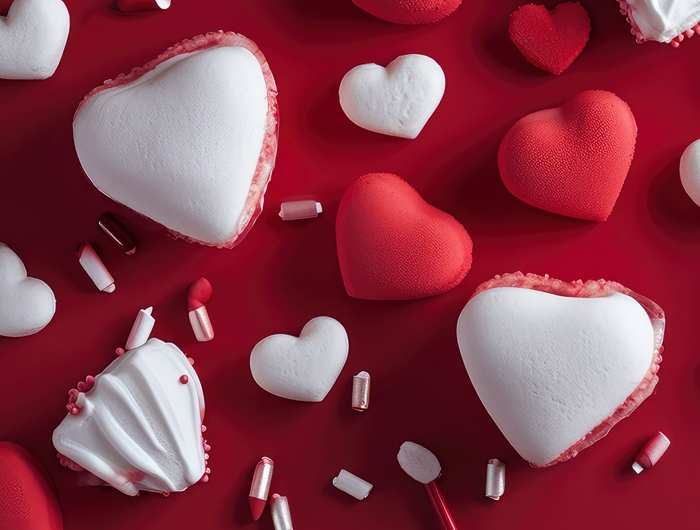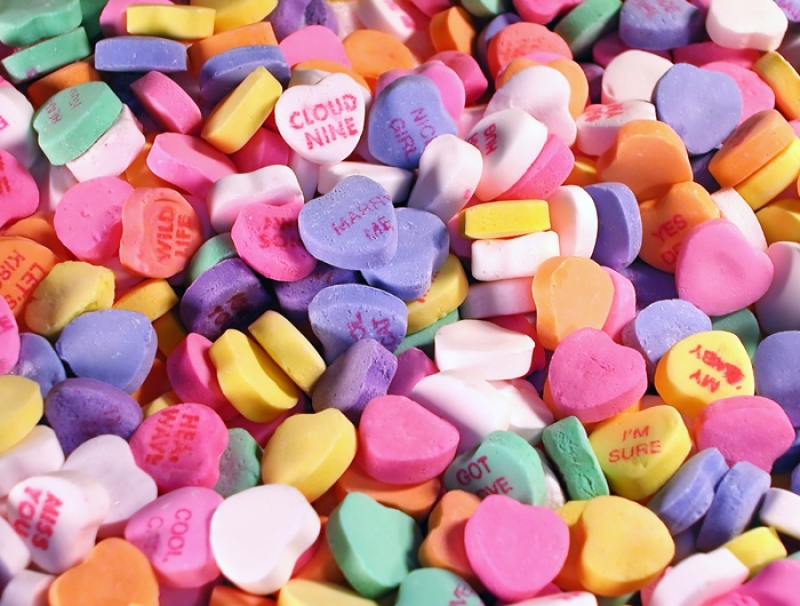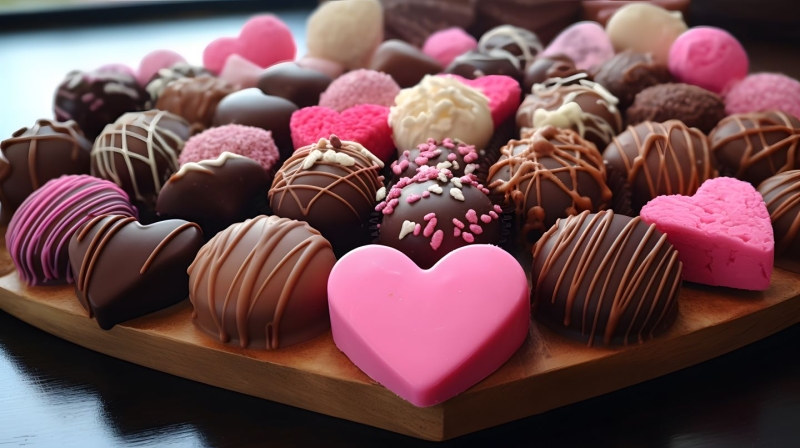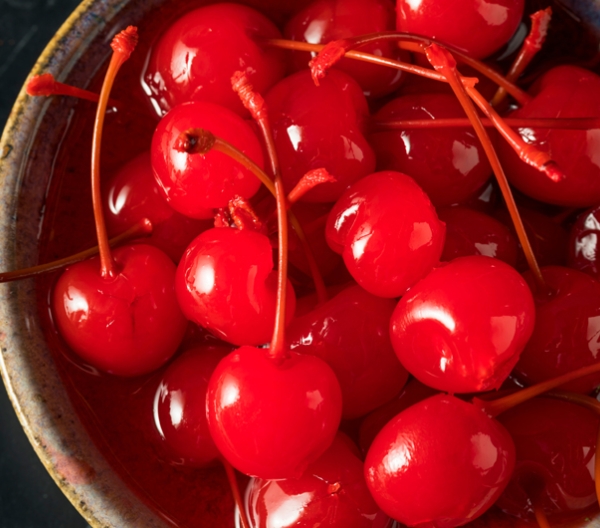Red 3-free Valentine's Day: Candy to gift, treats to skip

Pic Hub - stock.adobe.com.
Love is in the air, and everyone enjoys a lovely candy treat from time to time—but no one loves cancer. Carcinogenic Red 3 is in hundreds of candies and snack products, including many that appear on shelves only for Valentine’s Day. Here's how to avoid Red 3, what to give your sweetie instead, and how you can help us ban this harmful color additive.
Treat yourself—but read the labels first
Sure, candy isn’t the healthiest option, but we all enjoy a treat from time to time. A candy treat can make you smile and brighten a tough day. But a few extra calories in your diet is one thing; a cancer-causing ingredient in your treat is another. So, if you’re avoiding ingredients that are carcinogenic (and you should!), then you’ll want to avoid the food dye Red 3.
What is Red 3?
Red 3, also labeled FD&C Red 3, is a synthetic food dye the FDA has recognized as a carcinogen. The agency banned it from use in cosmetics and topical drugs in 1990 and promised to take steps to remove this additive from our food supply—steps that have not yet materialized, thanks to some heavy lobbying from the maraschino cherry industry. That means Red 3 is a known carcinogen used freely in foods in the US—and that’s been the case 34 years longer than necessary.
In addition to cancer, Red 3—like other synthetic food dyes—can cause neurobehavioral problems in some kids, according to a rigorous and systematic review of the evidence published by the state of California in 2021. Effects might include hyperactivity, inattention, sleeplessness, and other problems.
Red 3 lurks in hundreds of foods, such as candies, snack cakes, and fruit cocktails. This includes dozens of seasonal items, including the most popular Valentine’s Day candies. A search of the U.S. Department of Food and Agriculture’s Branded Food Products Database identified 8,827 U.S. food products that contain Red 3—including hundreds of products made by the country’s biggest food companies.
Some states are protecting consumers and outpacing the FDA
In October 2023, Gov. Gavin Newsom signed the California Food Safety Act into law, making it illegal to sell foods containing Red 3 and three other additives in the state beginning in 2027.
Meanwhile, similar legislation in New York, Illinois, Washington, South Dakota, and Missouri has been introduced. If these bills pass, it will force manufacturers of candies and other foods that use Red 3, BVO, propylparaben, potassium bromate—and in some states, titanium dioxide—to reformulate before selling their food products in those states.
CSPI and partners like Environmental Working Group urged Gov. Newsom to sign the California bill, and celebrate the many states that have followed California’s lead. But CSPI also believes that states shouldn’t have to control food quality through their own legislation. The evidence for Red 3’s toxicity is already clear (and was cited in the FDA’s ban of Red 3 from cosmetics), so the FDA should respond to CSPI’s 2022 petition and 2023 follow-up letter to ban it from food use and remove Red 3 from the US food supply.
Where to find Red 3 this Valentine's Day
While CSPI and our partner organizations work to eliminate Red 3 from all foods, the best thing consumers can do is to avoid Red 3 when possible. Red 3 will appear by name on ingredient labels when it has been added to foods, but looking through ingredient lists is time-consuming and tedious. To help you sort through your goodies this Valentine’s Day season, we’ve rounded up a list of popular candy and snack items that might find their way into your home.
Candy hearts

We know it’s hard to hear, but the quintessential Valentine’s Day heart-shaped candy made by Spangler Candy (Sweethearts) and Brach’s (Conversation Hearts) both contain cancer-causing Red 3. In fact, Brach’s entire line of Conversation Hearts, including the Tiny, FRIENDS™, and Wisecracks versions, and similar candy hearts made by smaller brands like Eillien’s, Fareway, Galerie, The Candy Shoppe, Torn and Glasser, Weis, and Hyvee all contain Red 3.
Seasonal marshmallow candies
There’s a version of marshmallow candy for nearly every holiday, and Valentine’s Day is no exception. Bon Vivant’s chocolate-dipped Be My Valentine treats contain Red 3. Meijer’s Valentine Mello Cremes, and Melville’s Marshmallow Double Heart Pop and Marshmallow Valentine’s Heart Kabob also use Red 3.
Some chocolate items

Chocolate and Valentine’s Day go hand in hand, but checking chocolate products for harmful color additives is not always intuitive. For this holiday, Red 3 most often appears in red- and pink-colored white chocolate coatings, or in the sprinkles or fillings of milk or dark chocolate items. Products to watch out for include Melville’s Valentine’s Day Gourmet Pretzels and Sweet Valentine Chocolatey Dipped Cocoa Spoons, Palmer’s Cupid’s Pals, Zachary Valentine Pretzels, and Favorite Day’s chocolate-dipped Love’s Arrows and Valentine’s Crunchy Clusters.
Jordan almonds
Though Jordan almonds are not exclusively for Valentine’s Day, several brands do issue seasonal versions in red, pink, and speckled varieties that could contain Red 3, including Setton Farms, which uses the carcinogenic dye.
Ring Pop
Valentine’s Day might be the perfect day to give someone a ring. But if it’s an edible ring like Ring Pop, steer clear of Strawberry, Berry Blast, and Twisted Citrus Craze—in addition to containing Red 3, some of these flavors of the gem-shaped candies also contain titanium dioxide, which potentially damages DNA. Flavors without Red 3 include the original Cherry, Blue Raspberry, and Watermelon varieties. When in doubt, check the ingredients list!
Baking and confection ingredients

Outside of packaged prepared snacks and candies, many holiday or seasonal decorative products, like sprinkles, candy bits, and chocolate or white chocolate coatings, contain Red 3. Try to avoid Russell Stover’s regular and sugar-free Chocolate Candy Gems, Wilton’s red sanding sugar sprinkles and rainbow medley sprinkles mix, and other brands of sprinkles and nonpareils that contain Red 3 when you’re making Valentine’s Day treats for your loved ones or class parties.
Valentine’s Day candy alternatives without Red 3
Many sweet Valentine’s Day options don’t have any color additives, including milk and dark chocolate products. However, if you can’t go without red or pink candy, we’ve got you covered.
Many brands of cordial or chocolate-covered cherries now dye their cherries with Red 40. Read the ingredient lists, but watch out for those that list only "artificial color"—which could be Red 3—or list "maraschino cherries" without indicating which colorant is used. Red 3-free brands include Queen Anne (milk, dark, and dark chocolate coconut varieties), Bissinger's, and Andy Anand.
Williams Sonoma Cinnamon Gummy Hearts and Brach's Jube Jel Cherry Hearts don’t contain Red 3.
This Valentine’s Day, you can remind your partner that they’re red hot. Red Hots don’t contain Red 3.
M&M’s, which famously removed red candies in 1976 (because they were colored with now-banned Red 2) and brought them back (using a mix of Red 3 and Red 40) in 1987, have since dropped Red 3 from their ingredient lists.
And in a pinch, BlowPops, Smarties, Nerds, Twizzlers, and Red Vines are also Red 3-free and can be great red-candy alternatives.
Does that mean these candies are safe?
All candies and snacks listed here contain some form of synthetic food dye (typically Red 40), which can cause neurobehavioral problems in some kids, and a lot of added sugars, and some are made with sweeteners we rate “Avoid,” like acesulfame potassium (Ace-K). For example, Skittles are Red 3-free, but like some flavors of Ring Pops, they do contain another food additive that harms human health—titanium dioxide.
Bottom line: Read the labels
If you’re concerned about additives, particularly those that cause cancer, it’s best to read the label to see the full ingredient list. If you’re curious about which additives we recommend avoiding—and why—check out our Chemical Cuisine database of additives.
You can also help us demand a healthier future for you and your children by supporting CSPI’s advocacy work. You can also subscribe to NutritionAction Healthletter, the most trusted health newsletter in the US. Together, we can ensure a healthier food future.

Stirring the Pot
Join the fight for safer, healthier food
Sign up to receive action alerts and opportunities to support our work in Stirring the Pot, our monthly newsletter roundup.

